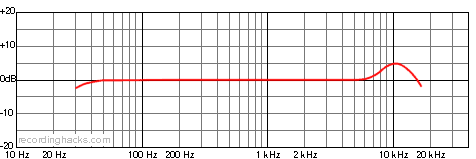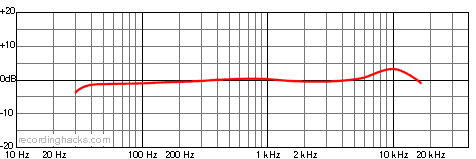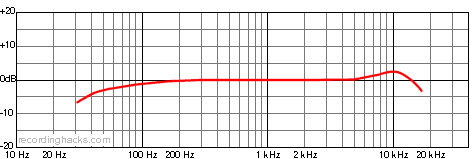 Neumann M 269 C
Neumann M 269 C
Multi-Pattern Tube Condenser Microphone
The M 269 is a large-diaphragm, multipattern tube condenser microphone. It is a variation of the Neumann U-67, developed as a way to sell the U-67 to the German broadcast market.
German broadcasters imposed requirements on the supply voltage of microphones. The EF86 tube in the U-67 did not meet these requirements. To satisfy broadcasters’ requirements, Neumann developed the M269 by making the following changes to the basic U-67 design:
- The EF86 was swapped for an AC701 (aka AC701k) triode vacuum tube.
- The “Omni” and “Figure 8” positions on the pattern selection switch below the headbasket are replaced by a remote-control feature labelled ‘F’; both positions (which function identically) allow the mic’s pickup pattern to be controlled remotely via the switch on the power supply. A side-effect of this feature is that the M269, unlike the U67, provides continuously-variable pattern selection.
- RF shielding was incorporated into the M269 plug.
 The mic has two Cardioid modes — one selected by the switch on the mic, and the other selected by setting the mic switch to ‘F’ and the PSU switch to Cardioid.
The mic has two Cardioid modes — one selected by the switch on the mic, and the other selected by setting the mic switch to ‘F’ and the PSU switch to Cardioid.
The mic-switch “Cardioid” mode disconnects the rear diaphragm of the K67 capsule, dropping the mic’s voltage requirement to the point where the mic could be powered (given an appropriate adapter) by a PSU intended for one of Neumann’s “miniature” microphones. This Cardioid mode is 4dB more sensitive than the remote-selected Cardioid mode.
The K67 capsule was developed specifically for the U-67 microphone, released just two years before the M269. The M269 was only the second microphone to use the new capsule design.
The K67 was Neumann’s first capsule with dual backplates. Its famous predecessor, the K47 capsule, employs a single, “shared” backplate, which proved too difficult to tune for symmetrical figure-of-8 response. The use of two backplates allowed technicians to tune the two diaphragms separately and equally before joining them into a single, completed capsule.
Neumann
A special circuit within the amplifier distinctly attenuates all frequencies below 30[Hz], while those above 40[Hz] are reproduced linearly. The microphone amplifier’s response may be extended to below 20[Hz] flat by opening the jumper “S-2” in the amplifier itself.
The M 269 was manufactured from 1962 through 1973.
M269 circuit photo credit: Madooma Vintage Microphones
The Neumann M 269 C is also known as: M269, M269C.
The mic was released in 1962.
Specifications
| Frequency Response - OmnidirectionalClick Graph to Compare! |
|---|
 |
| Frequency Response - CardioidClick Graph to Compare! |
 |
| Frequency Response - BidirectionalClick Graph to Compare! |
 |
| Pickup Patterns | Pads & Filters |
|---|---|
|
Omnidirectional
(9 mV/Pa; 30 - 16,000 Hz) Cardioid (15.5 mV/Pa; 30 - 16,000 Hz) Bidirectional (11 mV/Pa; 30 - 16,000 Hz) |
|
| Capsule Dimensions | Impedance | SPL/Noise |
|---|---|---|
| Diameter n/a |
200 Ohms (Low) | Max SPL: 124 dB |
| Weight | Length | Max Diameter | Interface(s) |
|---|---|---|---|
| 590g (20.81oz) | 201mm (7.91'') | 56mm (2.20'') |
|
| Power Specifications |
|---|
|
Did we get anything wrong on this page? Please let us know!



